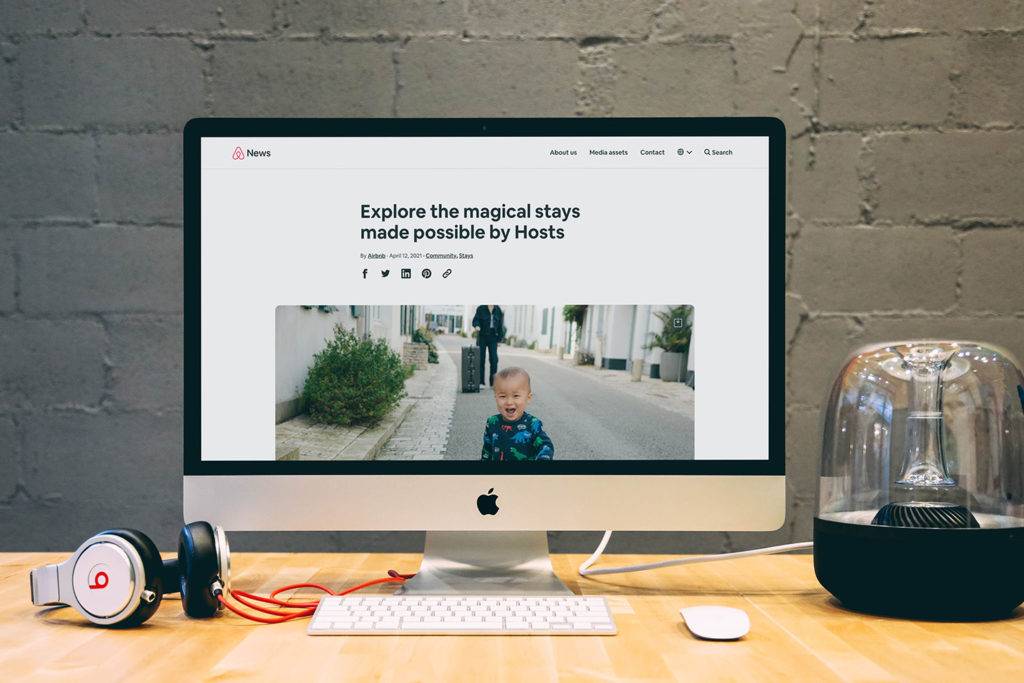How has the travel landscape changed?
Travelling abroad has been severely altered by the pandemic. With curfews and travel restrictions put in place across the world, there has been a significant impact on global tourism – visits to see family, uncover new culture or discuss business have been halted. In fact, global revenue was estimated to drop over 20% in 2020, with Europe expected to see the largest decline. Yet, travelling in 2022 is beginning to look a bit more like the pre-pandemic age; but the question is, do consumers feel the same about travelling as they did before?
With safety restrictions making travelling harder and more expensive, fewer UK citizens plan to go abroad this year compared to 2019. There’s also still a sense of uncertainty and anxiousness attached to travel that can make consumers hesitant to make a decision. Travel experiences have shifted and the new reality looks different to what we might have ever expected.
What is the new travel reality?
Despite precarity, consumers are still looking to travel. Before the pandemic, there was less faff associated with holidaying and less restrictions when it came to exploring the world. Now, consumers feel as though they’ve missed out on experiences and are playing catch up. This has brought about a new-age ‘catch-up consumer’, who are willing to treat themselves to an upgraded experience, visit somewhere completely new, or try a bucket-list destination.
Longer trips are also undergoing a big travel change, with short stays becoming a thing of the past as consumers look to delve into longer experiences that fulfil more needs. The desire for reconnection is driving consumers to take action, as new travel experiences are becoming more important than ever.

What does this mean for travel brands?
With consumers’ needs more focused around investing in their holiday to guarantee a new, satisfying experience, brands have to adapt their content to this ever-changing landscape if they want the right consumer’s attention. To understand how brands should be marketing to the relevant audience, we need to uncover how consumer’s are searching for their travel holidays today.
Interest-driven
As we know, consumer needs have altered and there’s no surprise to see a change in interests across the search landscape. Pinterest’s travel trend guide highlights an increase for today’s travelers being guided by passions, such as “dream vacation destinations”, rather than destinations. Travelers have a clear goal to focus their holiday around but need help filling in the gaps; they need expert advice and guidance on how to go to the Caribbean with two kids and a tight budget or where to go for a first time hike with amazing views.
Social-first planning
The ‘catch-up consumer’ wants to invest in a worthwhile travel experience, which has resulted in an increase in planning and preparation searches. This new consumer is fitting their research into their online social activity with TikTok hashtags for ‘traveltips’ (from 583.4 million in 2021 to 1.9 billion in 2022) and ‘travelhacks’ (from 409.5 million to 964.1 million) almost doubling in views. Short, engaging videos, give potential travelers a snapshot of what to expect – it’s easy to consume, to react to and to save and come back to later. TikTok content is also synonymous with authenticity, so although consumers might not know the creators, they trust the message, which can inspire action.
For #travel:
For #traveltips:
For #travelhacks:
Flexible holidays
Travelers want their holiday to be an adventure and are willing to invest in this. A holiday that complements changing culture, such as flexible working and wellbeing, is now a key interest for potential travelers too. A slower pace of life is becoming more and more popular, so there’s more time to think, relax and chill out. Airbnb will be trialing ‘flexible destinations’ (in June 2022) that responds to this trend by offering results for unique homes that consumers might not have thought of. Private Islands and yurts will be put in front of travelers to inspire their next holiday and appeal to their flexible, laid-back approach.
How can travel brands encourage consumers to take the trip?
In order to engage previous travelers and attract new potential consumers, brands need to adapt their content strategy to appeal to customers’ new needs. From the content format and topic to the distribution, a content strategy that aligns with customer’s interest will make a lasting impact that could result in an increase in brand organic traffic, visibility and revenue.
Focus on personable content
With customers prioritising connections, brand content should incorporate this sentiment through relatable, personable copy and messaging. You can understand what trends are resonating with this audience by monitoring uplifts in search volume. Incorporate long-tail and interest-led queries to discover what is making your audience tick, and start building out your strategy around the high-demand topics. When developing your content ideas, make sure the customer’s problems and passions are at the forefront, so your audience feel heard and connected with.
Another way to make your audience feel connected to your content is by putting a face to your copy. Images are great, but an expert figure can provide authority and make the audience feel like they’re speaking to a real, friendly person. Airbnb’s ‘Made by Hosts’ campaign celebrates the faces behind the Hosts that make people’s holiday experience so magical. It creates a personal connection that consumers are craving and champions nostalgia, which makes the content relatable and memorable.

Create a community
The changing pace of life, highlighted by the desire for flexible holidays demonstrates that customers want to feel like they aren’t alone in their search; they want a community that supports their ideas and responds to their questions. Creating informative FAQ content with simplified copy can support this need, and by incorporating video can elevate the engagement further.
Forming a community with your audience can also be done through social media engagement. Encouraging customers to interact means you need content that reacts to their trending interests and answers their most-searched-for questions. For your customers to like and comment, you as a brand should interact with your audience too. Ryanair have done just this on their TikTok account, which has resulted in over 46 million likes and a 3226% follower count increase in less than two years. They’ve used humour to respond to comments, and their followers have responded with equally entertaining duets and reactions. Developing an online community through TikTok engagement has rocketed Ryanair’s social presence, and with brand site links and sale mentions listed across their account, it’d be no surprise if this has had a huge impact on their site conversions and revenue.
Review your competitor landscape
We know customer interests have developed and with new topics to target, your competitor landscapes have probably also changed. An understanding of your new customers’ priority topics and their most searched for trending queries will help to form the foundation of your competitor research. With the travel industry changing so much, it’s possible that what was previously a top competitor may no longer operate in the same capacity, and other brands across wider niches (you might never have thought of) might now be your biggest competitor. You need to uncover who these competitor brands are, how they’re creating content and how they’re speaking to their customers to decide how to structure your own content to target the right people, and most importantly, entice them to take action.
Be flexible and reactive to trends storytelling
Flexible travel is taking priority for customers this year, so for a content strategy to see positive organic performance results it also needs to be flexible. Content formats should be revisited to ensure they’re still the most beneficial to the customer’s journey – if competitors are producing more of a specific format or if new customer topics lend themselves to a particular medium, investing in ways to adapt content outputs will have long-term benefits.
Understanding what is engaging your customers right now and in the near future will help to generate reactive content. On-trend stories show brands are aware of their audience’s current challenges and are flexible enough to solve them. Google Trends can help evaluate the volume and longevity of a trend, and extending your cross-team collaboration with a Digital PR specialist can help excel target objectives and secure content exposure to the desired audience.
Adapting a content strategy to changing customer interests keeps brands relevant and can even have the power to reinvent a brand. United Airlines have rebuilt their brand positioning through a TikTok strategy that capitalises on where their customers are getting information to their advantage. Using an existing trend, this long-standing brand can reconnect with their audience through a medium that’s authentic to them.
Final Thoughts
The travel industry is constantly evolving at the moment, and an effective content strategy needs to reflect these changing times in order to make an impact. To keep up with your consumers, you need to adapt your content to your audience’s needs and ensure you’re speaking to them through the right tone, format and platform that will resonate. If your brand connects with your travel audience, no matter how restrictions change, they won’t forget you.
Look to our content strategy template to help guide your content when the goal posts keep moving.
If you want to know more about how to approach your content strategy when the landscape keeps changing, you can always get in touch and chat things through with one of our specialists.
